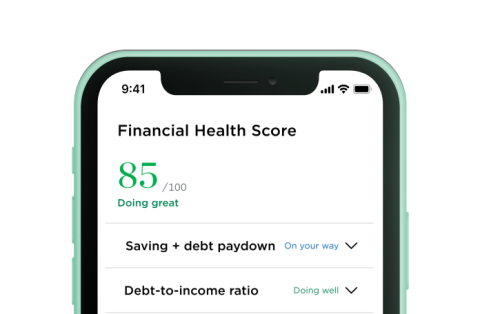Roth IRA Benefits (and Drawbacks)

Many or all of the products featured here are from our partners who compensate us. This influences which products we write about and where and how the product appears on a page. However, this does not influence our evaluations. Our opinions are our own. Here is a list of our partners and here's how we make money.
The investing information provided on this page is for educational purposes only. NerdWallet, Inc. does not offer advisory or brokerage services, nor does it recommend or advise investors to buy or sell particular stocks, securities or other investments.
Tax-free withdrawals in retirement are the main draw of Roth IRAs, but you don’t receive a tax deduction in the years you contribute.
Anyone can have a Roth IRA, but contributing depends on your income that year. If you don’t qualify, consider other strategies, such as a backdoor Roth IRA.
Contributions can be withdrawn from the account at any time, but withdrawing earnings early may come with taxes and penalties.
In the world of retirement accounts, Roth IRAs are a favorite. These accounts allow for tax-free growth and tax-free withdrawals in retirement. They also don’t require you to take money out at a certain age.
That said, everything has a downside, and Roth IRAs have their fair share.
Roth IRA pros and cons
Roth IRA Pros | Roth IRA Cons |
|---|---|
Tax-free growth and withdrawals in retirement. | No tax deduction for contributing. |
Not subject to required minimum distributions (RMDs) during your lifetime. | There is an income limit to contribute. |
Contributions can be withdrawn at any time without penalty or taxes. | Earnings can’t be withdrawn tax-free until age 59½ and the account is at least 5 years old. |
Diversification in retirement, so all of your accounts aren't tax-deferred. | The maximum contribution is relatively low compared with a 401(k). You'll probably need other accounts to save enough for retirement. |
NerdWallet rating 4.9 /5 | NerdWallet rating 5.0 /5 | NerdWallet rating 4.1 /5 |
Fees $0 per online equity trade | Fees $0 per trade | Fees $0 per trade |
Account minimum $0 | Account minimum $0 | Account minimum $0 |
Promotion None no promotion available at this time | Promotion None no promotion available at this time | Promotion Get up to $700 when you open and fund a J.P. Morgan Self-Directed Investing account with qualifying new money. |
Pros of Roth IRAs
Tax-free investment growth and withdrawals
The most obvious difference between a traditional IRA and the Roth is how each account deals with taxes. A traditional IRA offers an upfront tax break: Contributions may be deductible in the year they are made to the account. The money grows tax-deferred, but when you pull money out of a traditional IRA in retirement, you owe income taxes.
With the Roth, once you're 59½ and have held your Roth IRA for at least five years, you won't have to pay taxes on qualified withdrawals. That can give your savings a powerful boost, especially if you expect your tax rate to be higher in retirement.
» Learn more about the 5-year rule
No required minimum distributions
Traditional IRAs force you to pull out money beginning at age 73, thanks to required minimum distributions. Forget to cash the check, and the IRS could hit you with a penalty tax on the amount you didn’t withdraw.
Not so with a Roth. You can choose not to make withdrawals for as long as you're alive. This makes the Roth an effective financial tool to pass on to heirs.
Original account holders are free to let all of their money stay put for as long as they're alive, which means:
Investments can continue to grow tax-free in the account.
Investors can avoid selling assets at a bad time. In a traditional IRA, forced withdrawals mean cashing out investments regardless of market conditions. In a down market year, that could mean selling at a loss.
Penalty-free withdrawals
Ideally, the money you put away for retirement remains squirreled away and untapped until retirement. But at times when you really need the money, the Roth makes early withdrawals much easier than the traditional IRA.
If you take an early withdrawal from a traditional IRA before age 59½, you'll probably face both an income tax bill and a 10% early withdrawal penalty. (There are some exceptions; read more about traditional IRA withdrawals.)
You can dodge both the taxes and the penalty with a Roth as long as the money you withdraw comes from your contributions only. This makes it a cheaper choice when your emergency fund needs access to its own emergency fund. But keep in mind that you can't add contributions back to your account, and that you may lose out on potential investment growth.
Diversification in retirement
If you have a 401(k) or traditional IRA, you’ll pay taxes on that money when you start withdrawing it in retirement, and you’ll probably owe taxes on a portion of your Social Security income, too.
Having some money in a Roth provides the benefit of flexibility, meaning you can juggle your distributions from each account so you don’t push yourself into a higher tax bracket. You could collect your Social Security benefits, then take some money from your 401(k) or traditional IRA — just enough to bump up against the top edge of your income tax bracket.
If you need more income, you take a withdrawal from your Roth, which won’t count as taxable income.

Get a custom financial plan and unlimited access to a Certified Financial Planner™
NerdWallet Advisory LLC
Cons of Roth IRAs
No immediate tax break
You have to wait longer for the tax-savings payoff with a Roth IRA versus a traditional IRA. You pay taxes on the money before it goes into the account, meaning no tax deduction.
» Want to open a traditional IRA instead? See our list of the best IRA providers
Income limits to contribute
While anyone can open a Roth IRA, the amount you can contribute depends on your modified adjusted gross income. If you are below the income threshold, you can contribute the full amount of $7,000 in 2024 ($8,000 if age 50 or older).
Above certain incomes, your contribution may be reduced until it is phased out completely. While you won’t be allowed to contribute to a Roth IRA directly, there are other strategies for participating, but they require a bit more legwork.
» Learn more about Roth IRA income and contribution limits
Waiting period to withdraw earnings
You can withdraw contributions at any time tax free, but Roth IRA earnings are a different story. You must follow Roth IRA withdrawal rules, which require you to have held the account for at least five years and be age 59½ or older to avoid paying taxes and penalties.
Lower contribution limits
That contribution amount mentioned earlier? It's shared among all your IRAs, meaning you can contribute to multiple IRAs in a year, but the total can't exceed the annual limit. If you're looking to contribute more to your retirement, you'll need to look elsewhere.
Another option could be a 401(k) plan if your employer offers one (or a solo 401(k) if you're self-employed). Individuals can contribute $23,000 to their 401(k) plan in 2024, or $30,500 if age 50 and older.
» Get more details on 401(k) contribution limits

On a similar note...








